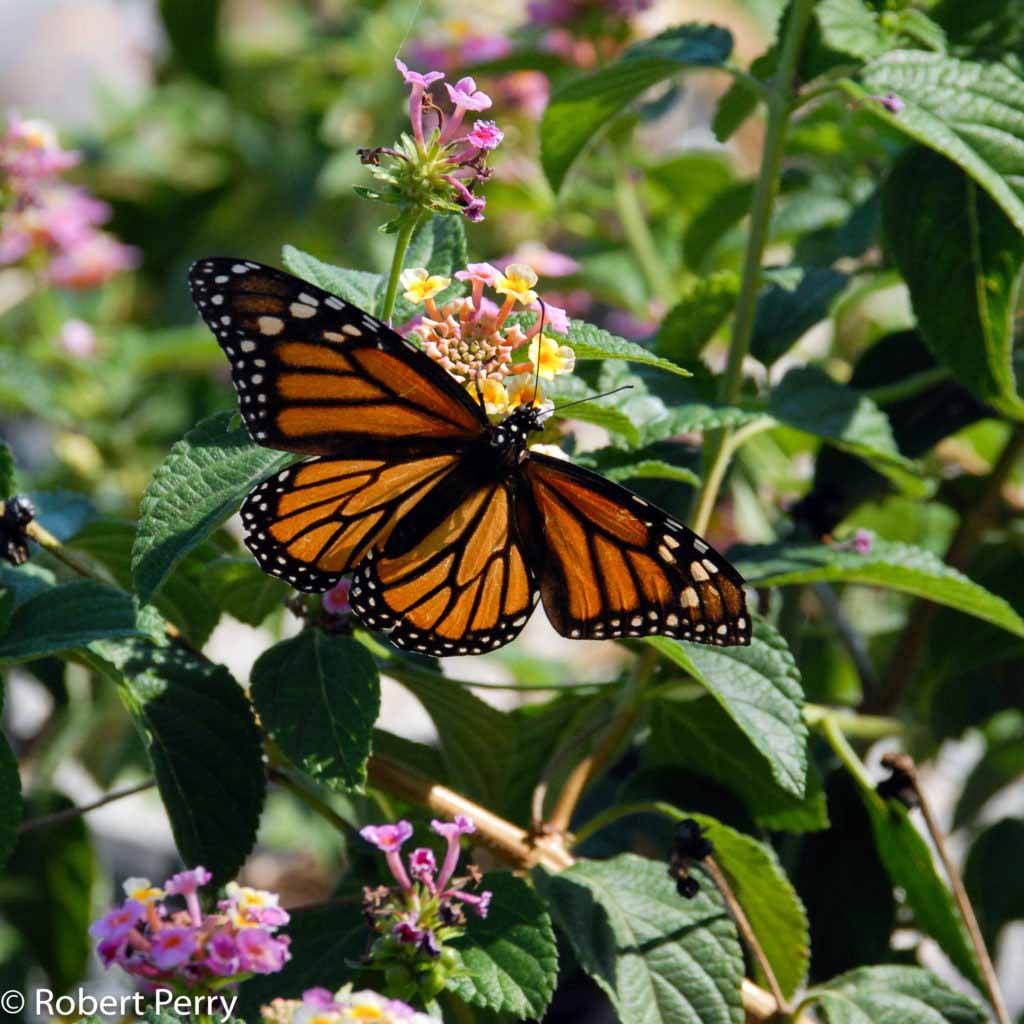Please note:
For most situations, we would not recommend installing this plant in new gardens, landscapes, or plantings in southern California.
While lantana is a tough plant if it receives some watering, it tends to “overgrow” the space it is placed in in most residential situations. I blooms a lot, but many California native plants provide better habitat for the butterflies and pollinators who use the plants in our landscapes.
Overall, we feel that there are plenty of more interesting choices for gardens in our region than lantana.
This plant profile is included in this site as a reference for two primary reasons:
- If you already have this plant in your landscape, this information can be used to know how to care for it.
- If you already have this plant in your landscape, you can use this information to learn which of our recommended plants have the same recommended watering needs, making them potential choices for grouping together if you will be adding new plants to the existing area.
In general, instead of this plant, we recommend planting appropriate California native plants whenever possible.
In addition to their beauty, California native plants offer the most additional benefits beyond just low water use, including habitat for the birds, butterflies, and pollinators who evolved here with them. This adds value and beauty in your landscape beyond just a pretty plant, allowing the landscape to actively contribute to the environment instead of just using less water. You can find our top recommended native plant choices on our Plant Finder by selecting “California Native” and learn more about California native plants here.
To learn what exactly California native plants are and how they are different from other low water plants, visit this link.
For visual interest or other reasons, some people may also want to mix in other non-native low-water demanding plant choices even though they do not have the same ecological value as native plants. For that reason, we feature a number of non-native waterwise selections on this site as well. However, we see native plants as the best “go to” for most landscape or garden choices! We encourage people to consider planting at least 50% of their landscape to native plants. See our Garden Designs section or visit our Waterwise Demonstration Garden in Montclair for plenty of inspiration.
————————————————————————————————————————————————
Lantana is a perhaps too commonly grown flowering shrub that is has become a “go-to” for freeway, large commercial, and gas station plantings. It is tough and blooms a lot. The blooms do provide nectar for butterflies, though many California native plants provide better habitat for butterflies overall.
Many of the cultivars grown by nurseries become medium to large shrubs with a mounding habit, quickly reaching 4-6 ft. high and 6-8 ft. across. Deep green leaves grow 2-4 in. long and have a pungent smell when crushed. Many color selections are available ranging from yellow and orange to pink and red.
It grows very quickly and are adapted to many soil types, full sun and watering schedules. While drought adapted, some leaves will drop during extreme moisture stress, but they regrow when water becomes available. Some of the cultivars that can are found in nurseries include: L. ‘Cream Carpet’ is a low spreading cultivar with light yellow flowers, L. ‘Feston Rose’ is a large and robust shrub selection good for hedges and background areas that produces pink and yellow flowers, and L. ‘Radiation’ that is a large shrub form with intense red and orange flowers.






